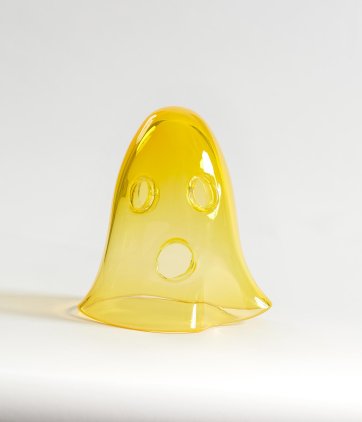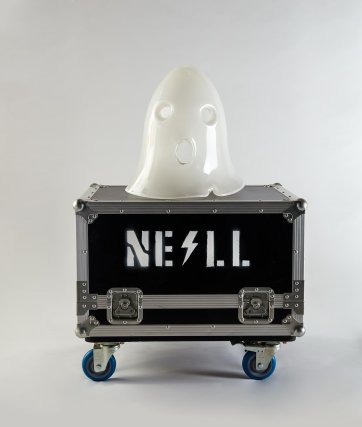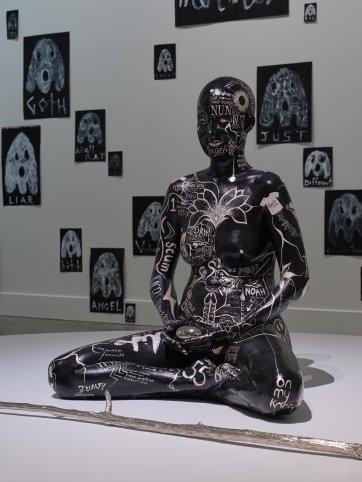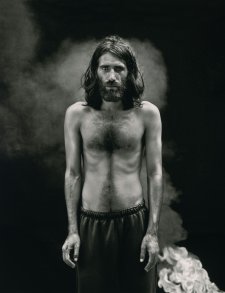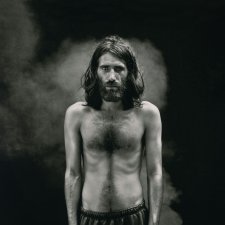Self-nature is subtle and mysterious – Tree Woman / Woman Tree is a self portrait belonging to a group of figurative sculptures made or conceived by Nell between 2008 and 2013. For these works she used casts of the body (her own and others) in walking or resting poses. These sculptures are at once recognisably human and ostensibly mythical. One holds the tusk of the narwhal, a whale sometimes called the unicorn of the sea. Another is covered with silver script, as though her thoughts were made manifest – a woman as open book. Other sculptures, including Tree Woman, are flanked by ghosts that while minimally articulated are of a colour as warm as ember.
The ghosts in Nell’s work have appeared and reappeared for many years. They are something for which she’s known, part of an artistic language that is both materially diverse and implicitly tender. The legibility of her work and its broad appeal have also to do with her use of familiar forms to embody and elicit complex ideas. Here there is a strategy at play, informed by a lineage of artists. She refers to Mike Kelley’s use of nostalgia and Colin McCahon’s deployment of words – emotions and phenomena that the viewer feels and handles daily, into which the artist instills their message.


